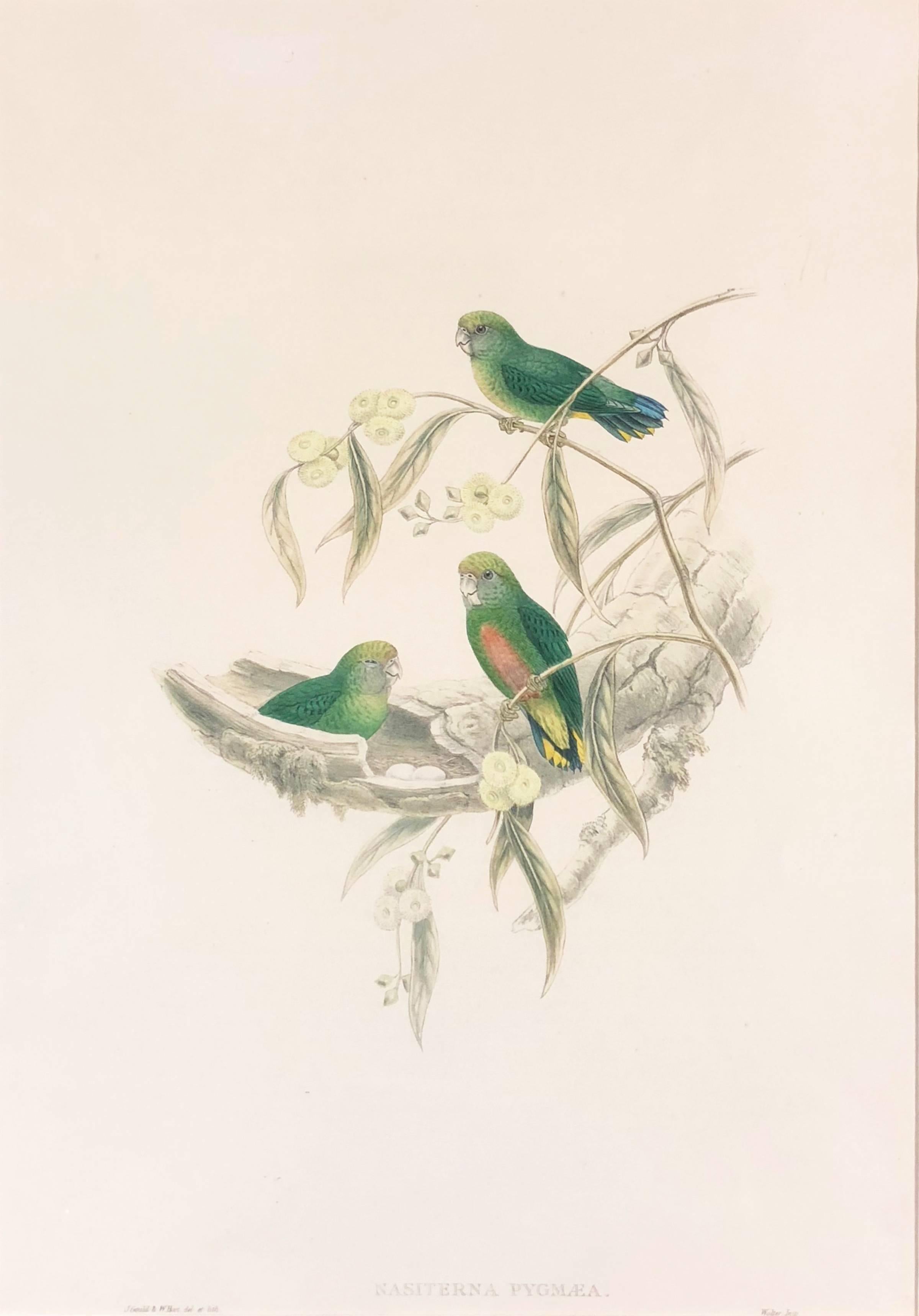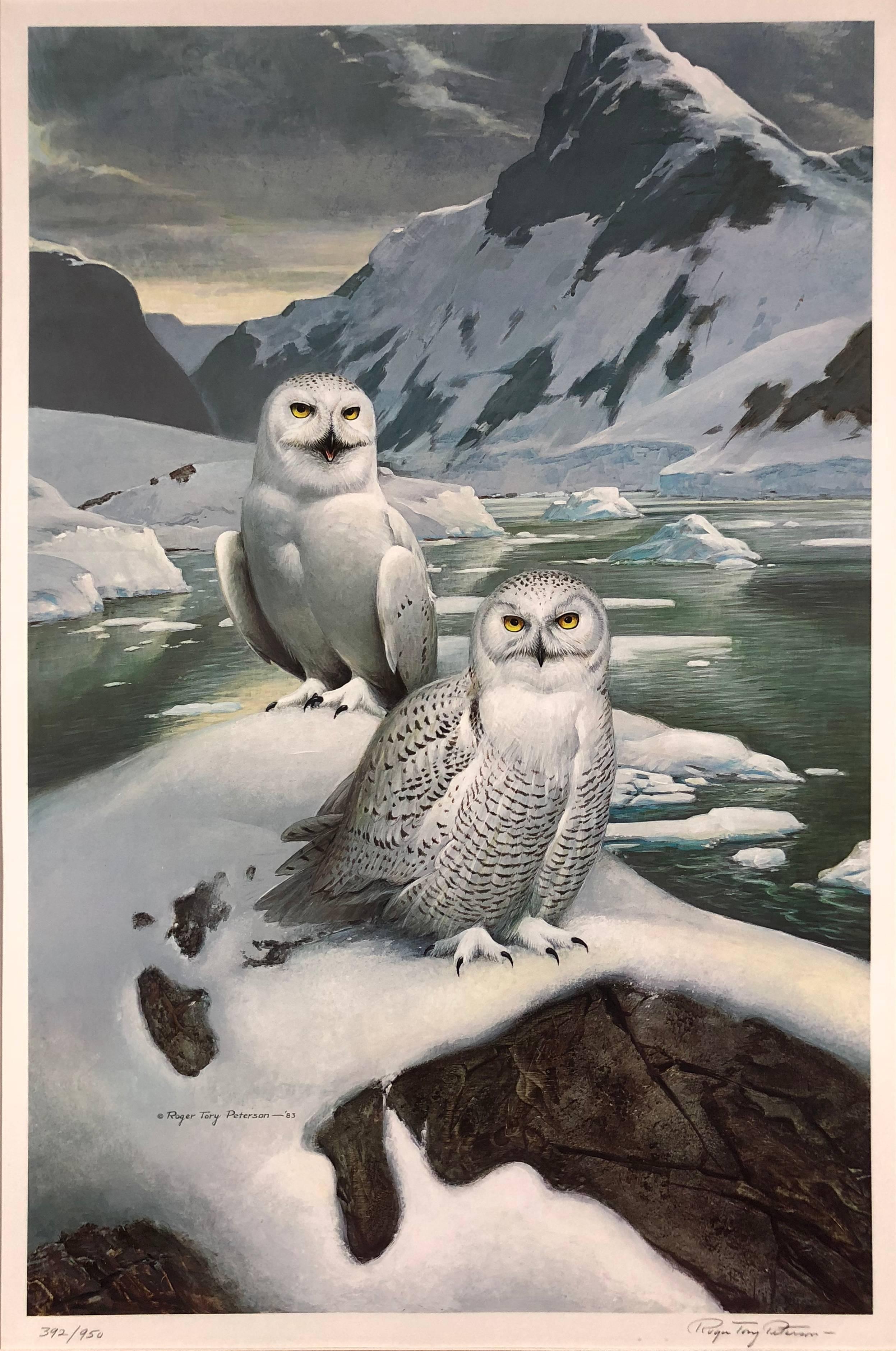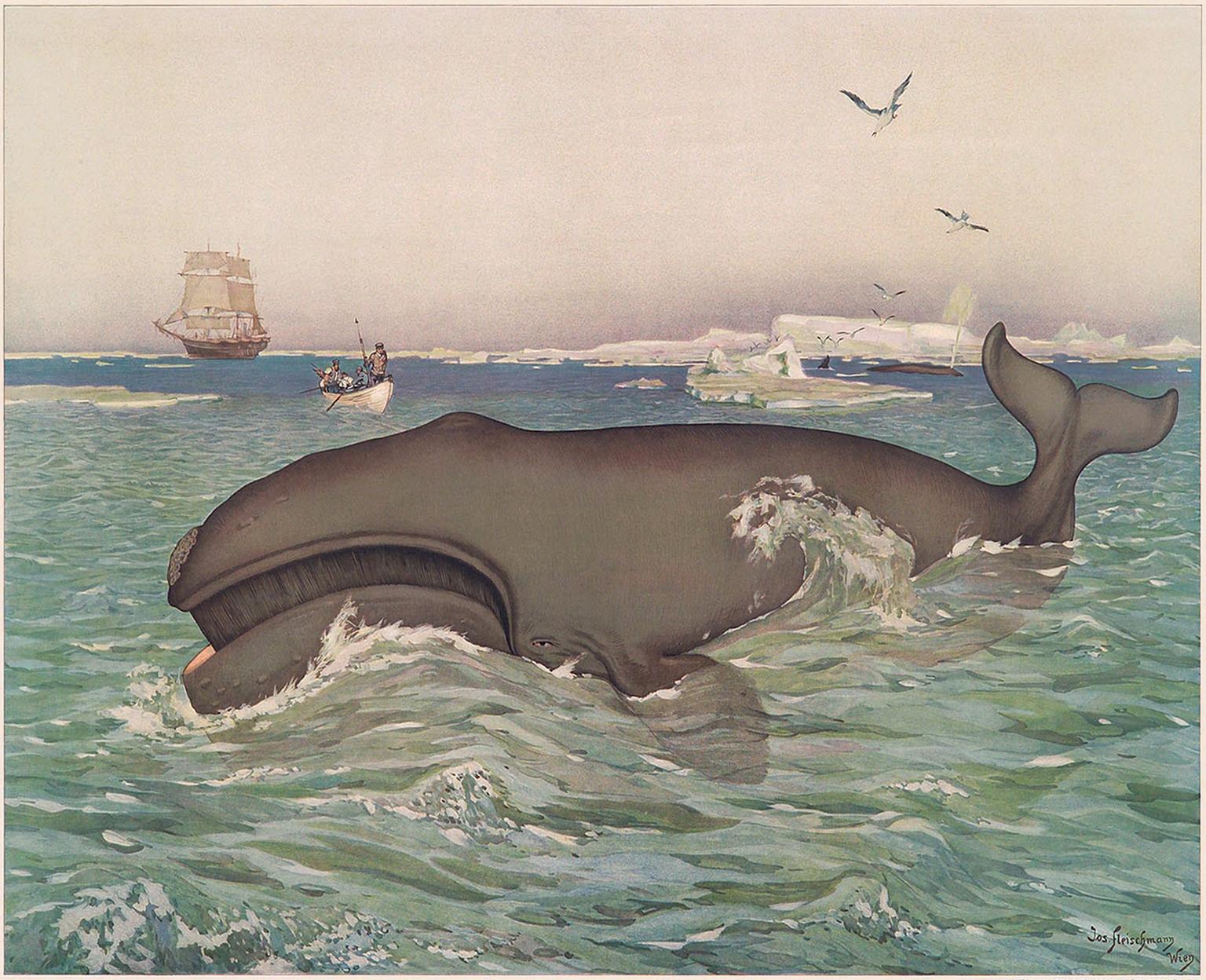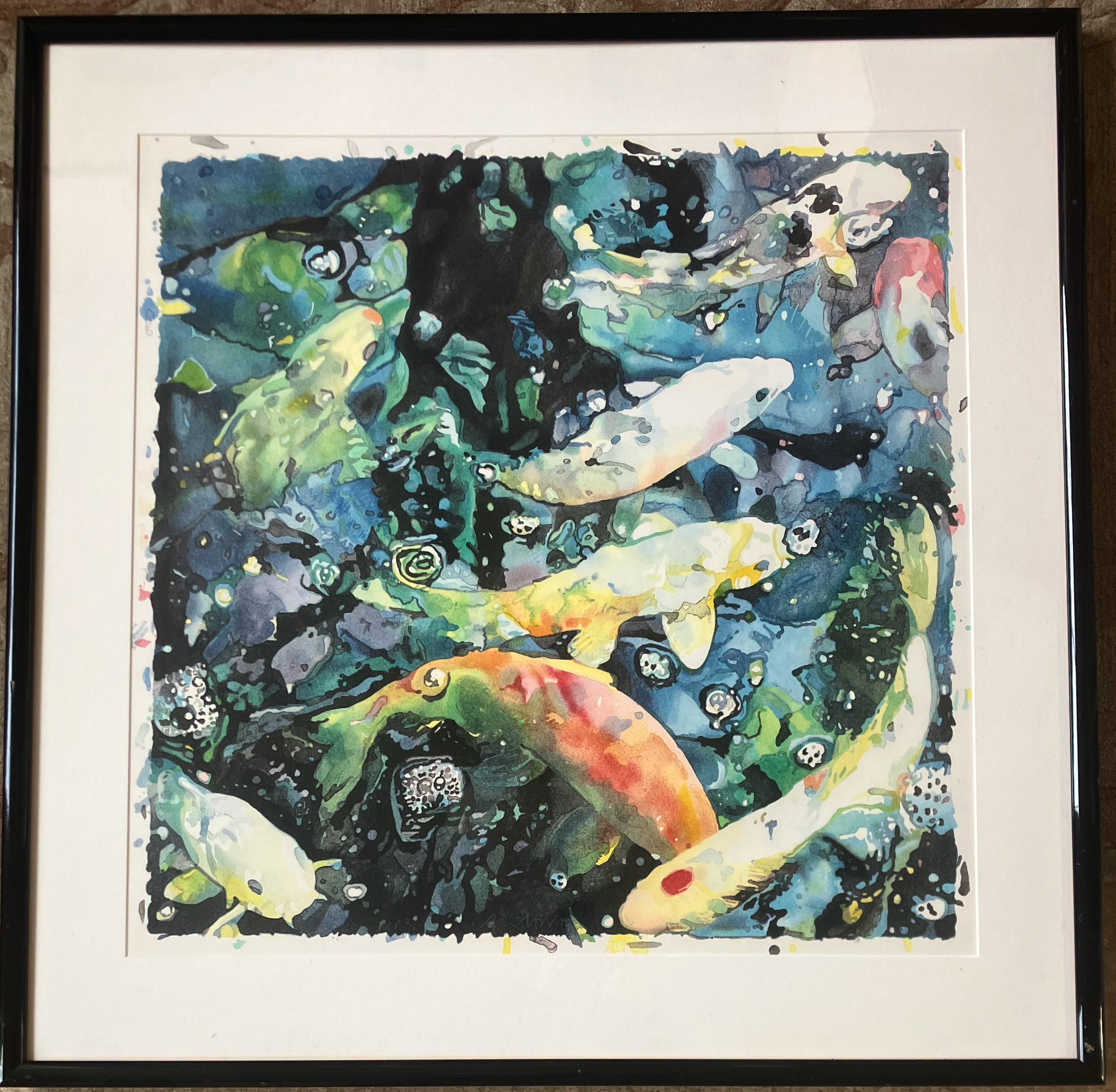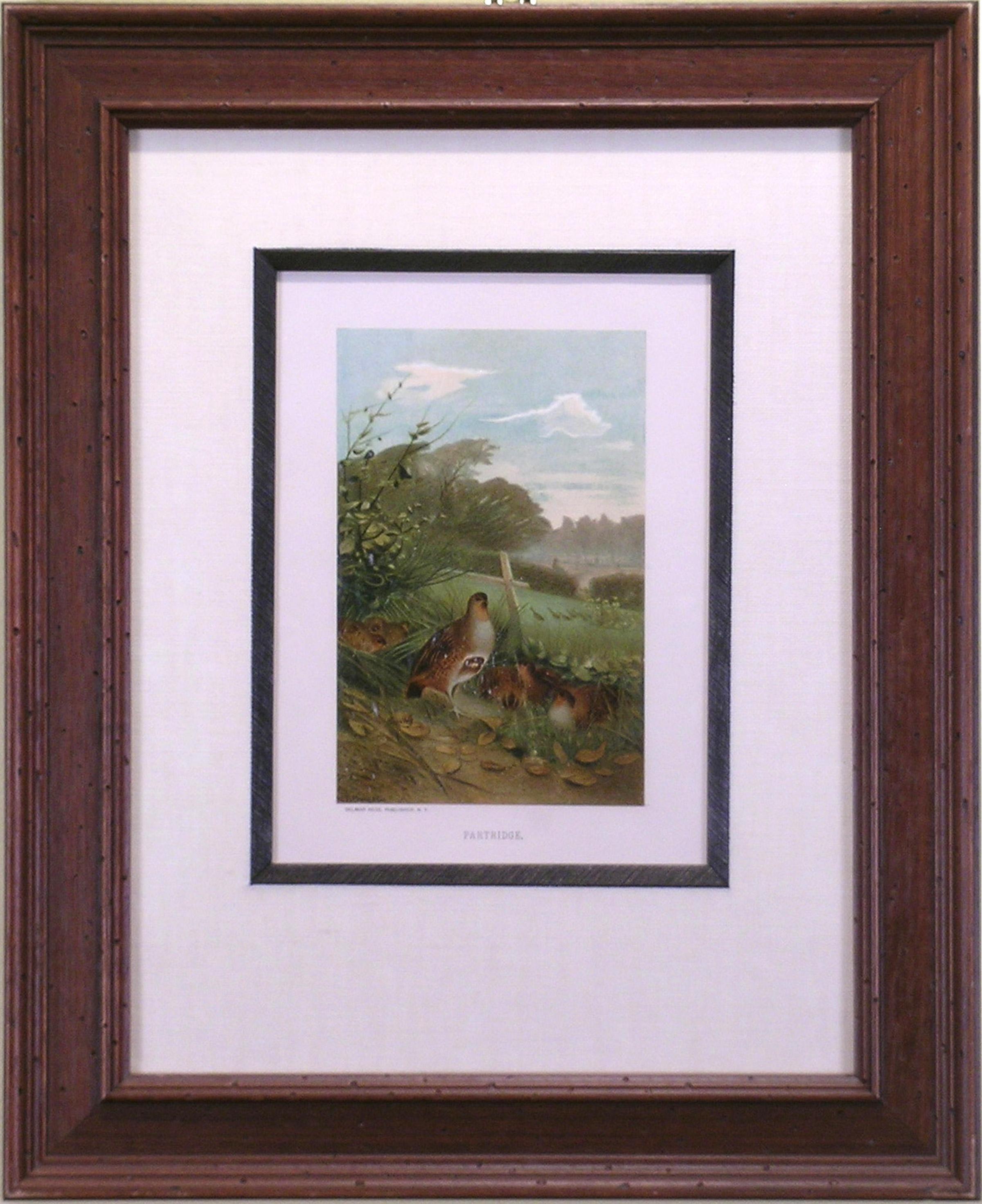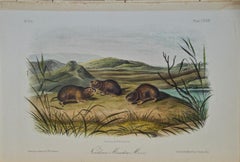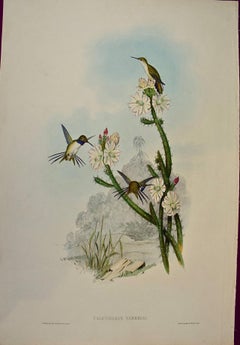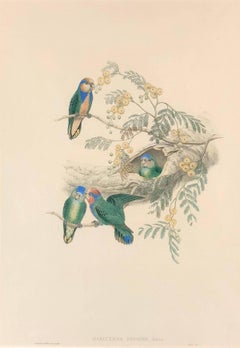
Original Audubon Hand Colored Lithograph of a "Ring Tailed Bassaris"
View Similar Items
Want more images or videos?
Request additional images or videos from the seller
1 of 7
John James AudubonOriginal Audubon Hand Colored Lithograph of a "Ring Tailed Bassaris"1849-1854
1849-1854
About the Item
- Creator:John James Audubon (1785-1851, American, French)
- Creation Year:1849-1854
- Dimensions:Height: 16 in (40.64 cm)Width: 12.5 in (31.75 cm)
- Medium:
- Movement & Style:
- Period:
- Condition:A few spots in the upper portion of the print.
- Gallery Location:Alamo, CA
- Reference Number:Seller: # 17461stDibs: LU117325509872
John James Audubon
John James Audubon (April 26, 1785, Les Cayes, Saint-Domingue (later Haiti) – January 27, 1851 (aged 65) Manhattan, New York, U.S.), born Jean-Jacques Audubon, was an American ornithologist, naturalist, and painter. He was notable for his expansive studies to document all types of American birds and for his detailed illustrations that depicted the birds in their natural habitats. His major work, a color-plate book entitled The Birds of America (1827–1839), is considered one of the finest ornithological works ever completed. Audubon identified 25 new species.
About the Seller
5.0
Vetted Seller
These experienced sellers undergo a comprehensive evaluation by our team of in-house experts.
Established in 2011
1stDibs seller since 2019
233 sales on 1stDibs
Typical response time: 1 hour
More From This SellerView All
- "Northern Meadow Mouse" an Audubon Hand Colored by J.T. Bowen LithographBy John James AudubonLocated in Alamo, CAAn original 19th century John James Audubon hand colored lithograph entitled "Northern Meadow Mouse", No. 26, Plate CXXIX, 129, from Audubon's "Quadrupeds of North America", printed ...Category
Mid-19th Century Naturalistic Animal Prints
MaterialsLithograph
- "Esquimaux Dog": An Original 19th C. Audubon Hand-colored Quadruped LithographBy John James AudubonLocated in Alamo, CAThis is an original John James Audubon hand-colored royal octavo lithograph entitled "Esquimaux Dog", No. 23, Plate CXIII, from Audubon's "Quadrupeds of North America". It was drawn ...Category
Mid-19th Century Naturalistic Animal Prints
MaterialsLithograph
- Yarrell's Wood-star Hummingbirds: A 19th Century Hand-Colored Gould LithographBy John Gould and Henry Constantine RichterLocated in Alamo, CAThis is a hand-colored folio sized lithograph entitled "Calothorax Yarrelli", Yarrell's Wood-star Hummingbirds by John Gould, published in his "A Monograph of the Trochilidae, or Family of Humming-birds", published in London in 1850. The print, which was drawn by Gould and Henry Richter and lithographed by Hullmandel and Walton, depicts three green, white, grey, and a little blue colored hummingbirds amid green cactus plants with white and pink colored flowers. The hummingbirds are augmented by gum-arabic paint, which gives them an iridescent appearance in areas in which it is used. This beautiful Gould hand-colored hummingbird lithograph is in excellent condition. The original descriptive text page from Gould's 19th century publication is included. There are several other unframed Gould hummingbird...Category
Mid-19th Century Naturalistic Animal Prints
MaterialsLithograph
- Caribou or American Reindeer: Original 19th C. Audubon Hand-colored LithographBy John James AudubonLocated in Alamo, CAThis is an original 19th century John James Audubon hand-colored quadruped lithograph entitled "Caribou or American Rein Deer", No. 26, Plate CXXVI, from Audubon's "Quadrupeds of Nor...Category
Mid-19th Century Naturalistic Animal Prints
MaterialsLithograph
- "Little Harvest Mouse": A Framed Original Audubon Hand-colored Folio LithographBy John James AudubonLocated in Alamo, CAThis rare original first edition Audubon hand-colored imperial folio-sized lithograph entitled "Mud Minimus Aud and Bach, Little Harvest Mouse, Males and Females, Natural Size" was e...Category
Mid-19th Century Naturalistic Animal Prints
MaterialsLithograph
- Hare Indian Dog: An Original 19th Century Audubon Hand-colored LithographBy John James AudubonLocated in Alamo, CAThis is an original 19th century John James Audubon hand-colored lithograph entitled "Hare Indian Dog", No. 27, Plate CXXXII, 132, from Audubon's "Quadruped...Category
Mid-19th Century Naturalistic Animal Prints
MaterialsLithograph
You May Also Like
- Green Painted Sea Shell Lithograph Edition 33 of 34By Frances NailLocated in Houston, TXGreen shell lithograph of a cone shell. Print is edition 33 of 34. Signed and dated by the artist along with titled. Print is framed in a golden frame...Category
1970s Naturalistic Still-life Prints
MaterialsLithograph
- Nasiterna BruijniBy John GouldLocated in Missouri, MOJohn Gould (British, 1804-1881) Nasiterna Bruijni c. 1849-1861 Hand Colored Lithograph Image Size: approx 19.5 x 13.5 inches Framed Size: 27 3/8 x 21 1/2 inches John Gould was an English ornithologist and bird artist. The Gould League in Australia was named after him. His identification of the birds now nicknamed "Darwin's finches" played a role in the inception of Darwin's theory of evolution by natural selection. Gould's work is referenced in Charles Darwin's book, On the Origin of Species. Gould was born in Lyme Regis, Dorset, the son of a gardener, and the boy probably had a scanty education. Shortly afterwards his father obtained a position on an estate near Guildford, Surrey, and then in 1818 became foreman in the Royal Gardens of Windsor. He was for some time under the care of J T Aiton, of the Royal Gardens of Windsor. The young Gould started training as a gardener, being employed under his father at Windsor from 1818 to 1824, and he was subsequently a gardener at Ripley Castle in Yorkshire. He became an expert in the art of taxidermy, and in 1824 he set himself up in business in London as a taxidermist, and his skill led to him becoming the first Curator and Preserver at the museum of the Zoological Society of London in 1827. Gould's position brought him into contact with the country's leading naturalists, and also meant that he was often the first to see new collections of birds given to the Society. In 1830 a collection of birds arrived from the Himalayas, many not previously described. Gould published these birds in A Century of Birds from the Himalaya Mountains (1830-1832). The text was by Nicholas Aylward Vigors, and the illustrations were lithographed by Gould's wife Elizabeth, daughter of Nicholas Coxen of Kent. This work was followed by four more in the next seven years including Birds of Europe in five volumes - completed in 1837, with the text written by Gould himself, edited by his clerk Edwin Prince. Some of the illustrations were made by Edward Lear as part of his Illustrations of the Family of Psittacidae in 1832. Lear however was in financial difficulty, and he sold the entire set of lithographs to Gould. The books were published in a very large size, imperial folio, with magnificent coloured plates. Eventually 41 of these volumes were published with about 3000 plates. They appeared in parts at £3 3s. a number, subscribed for in advance, and in spite of the heavy expense of preparing the plates, Gould succeeded in making his ventures pay and in realizing a fortune. In 1838 he and his wife moved to Australia to work on the Birds of Australia and shortly after his return to England, his wife died in 1841. When Charles Darwin presented his mammal and bird specimens collected during the second voyage of HMS Beagle to the Geological Society of London at their meeting on 4 January 1837, the bird specimens were given to Gould for identification. He set aside his paying work and at the next meeting on 10 January reported that birds from the Galápagos Islands, which Darwin had thought were blackbirds, "gross-bills" and finches were in fact "a series of ground Finches which are so peculiar" as to form "an entirely new group, containing 12 species." This story made the newspapers. In March, Darwin met Gould again, learning that his Galápagos "wren" was another species of finch and the mockingbirds he had labeled by island were separate species rather than just varieties, with relatives on the South American mainland. Subsequently Gould advised that the smaller southern Rhea specimen that had been rescued from a Christmas dinner...Category
1850s Naturalistic Animal Prints
MaterialsLithograph
- Nasiterna PygmaeBy John GouldLocated in Missouri, MOJohn Gould (British, 1804-1881) Nasiterna Pygmae c. 1849-1861 Hand Colored Lithograph Image Size: approx 19.5 x 13.5 inches Framed Size: 27 3/8 x 21 1/2 inches John Gould was an English ornithologist and bird artist. The Gould League in Australia was named after him. His identification of the birds now nicknamed "Darwin's finches" played a role in the inception of Darwin's theory of evolution by natural selection. Gould's work is referenced in Charles Darwin's book, On the Origin of Species. Gould was born in Lyme Regis, Dorset, the son of a gardener, and the boy probably had a scanty education. Shortly afterwards his father obtained a position on an estate near Guildford, Surrey, and then in 1818 became foreman in the Royal Gardens of Windsor. He was for some time under the care of J T Aiton, of the Royal Gardens of Windsor. The young Gould started training as a gardener, being employed under his father at Windsor from 1818 to 1824, and he was subsequently a gardener at Ripley Castle in Yorkshire. He became an expert in the art of taxidermy, and in 1824 he set himself up in business in London as a taxidermist, and his skill led to him becoming the first Curator and Preserver at the museum of the Zoological Society of London in 1827. Gould's position brought him into contact with the country's leading naturalists, and also meant that he was often the first to see new collections of birds given to the Society. In 1830 a collection of birds arrived from the Himalayas, many not previously described. Gould published these birds in A Century of Birds from the Himalaya Mountains (1830-1832). The text was by Nicholas Aylward Vigors, and the illustrations were lithographed by Gould's wife Elizabeth, daughter of Nicholas Coxen of Kent. This work was followed by four more in the next seven years including Birds of Europe in five volumes - completed in 1837, with the text written by Gould himself, edited by his clerk Edwin Prince. Some of the illustrations were made by Edward Lear as part of his Illustrations of the Family of Psittacidae in 1832. Lear however was in financial difficulty, and he sold the entire set of lithographs to Gould. The books were published in a very large size, imperial folio, with magnificent coloured plates. Eventually 41 of these volumes were published with about 3000 plates. They appeared in parts at £3 3s. a number, subscribed for in advance, and in spite of the heavy expense of preparing the plates, Gould succeeded in making his ventures pay and in realizing a fortune. In 1838 he and his wife moved to Australia to work on the Birds of Australia and shortly after his return to England, his wife died in 1841. When Charles Darwin presented his mammal and bird specimens collected during the second voyage of HMS Beagle to the Geological Society of London at their meeting on 4 January 1837, the bird specimens were given to Gould for identification. He set aside his paying work and at the next meeting on 10 January reported that birds from the Galápagos Islands, which Darwin had thought were blackbirds, "gross-bills" and finches were in fact "a series of ground Finches which are so peculiar" as to form "an entirely new group, containing 12 species." This story made the newspapers. In March, Darwin met Gould again, learning that his Galápagos "wren" was another species of finch and the mockingbirds he had labeled by island were separate species rather than just varieties, with relatives on the South American mainland. Subsequently Gould advised that the smaller southern Rhea specimen that had been rescued from a Christmas dinner...Category
Mid-19th Century Naturalistic Animal Prints
MaterialsLithograph
- Cangaroos in Danger - original Lithograph by F. Specht - 1879By Friedrich Specht 1Located in Roma, ITCangaroos in Danger is a black and white lithograph realized by Friedrich Specht in 1879. Image dimensions: 19,7 x 13,7 cm. Original Title: Am Auftralifchen "Bufch". Dated 1879 an...Category
1870s Naturalistic Animal Prints
MaterialsLithograph
- A Lying Animal - Original Lithograph by F. Specht - 1880By Friedrich Specht 1Located in Roma, ITA Lying Animal is a black and white print realized by Friedrich Specht in 1880. Lithograph on dark paper. Original Title: Derendet. Dated 1880, p.24. Signed by the artist on the r...Category
1870s Naturalistic Animal Prints
MaterialsLithograph
- Two Snowy OwlsBy Roger Tory PetersonLocated in Missouri, MOColor Lithograph Image Size: 30 x 19 inches Framed Size: 40.25 x 29.75 inches Edition 392/950 Artist Signed and Numbered Artist and naturalist Roger Tory Peterson...Category
Late 20th Century Naturalistic Animal Prints
MaterialsLithograph
Price Upon Request

